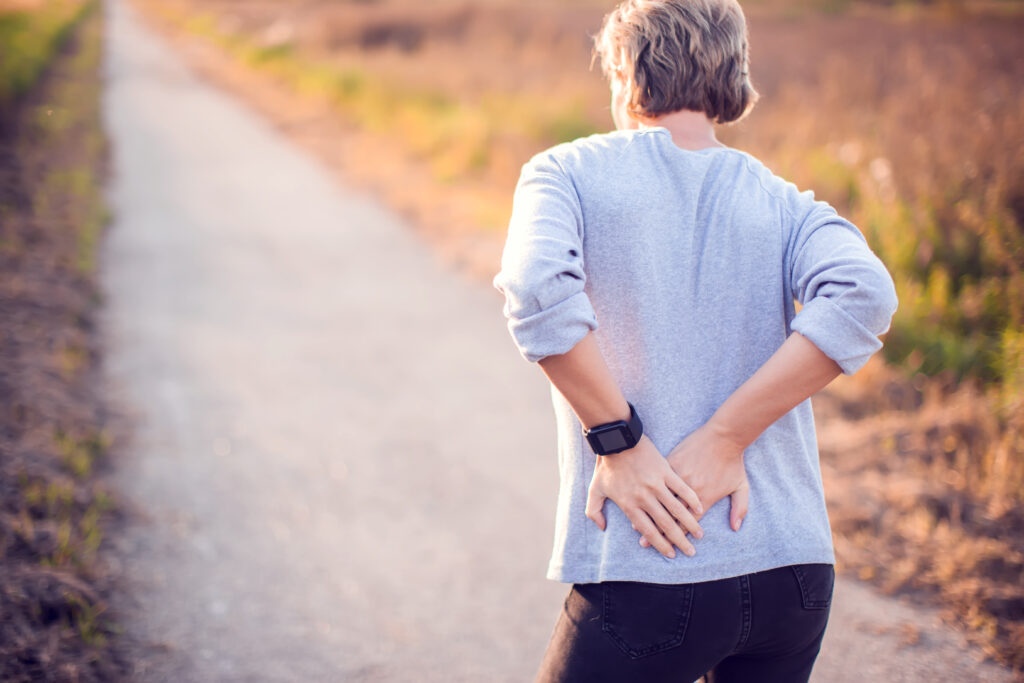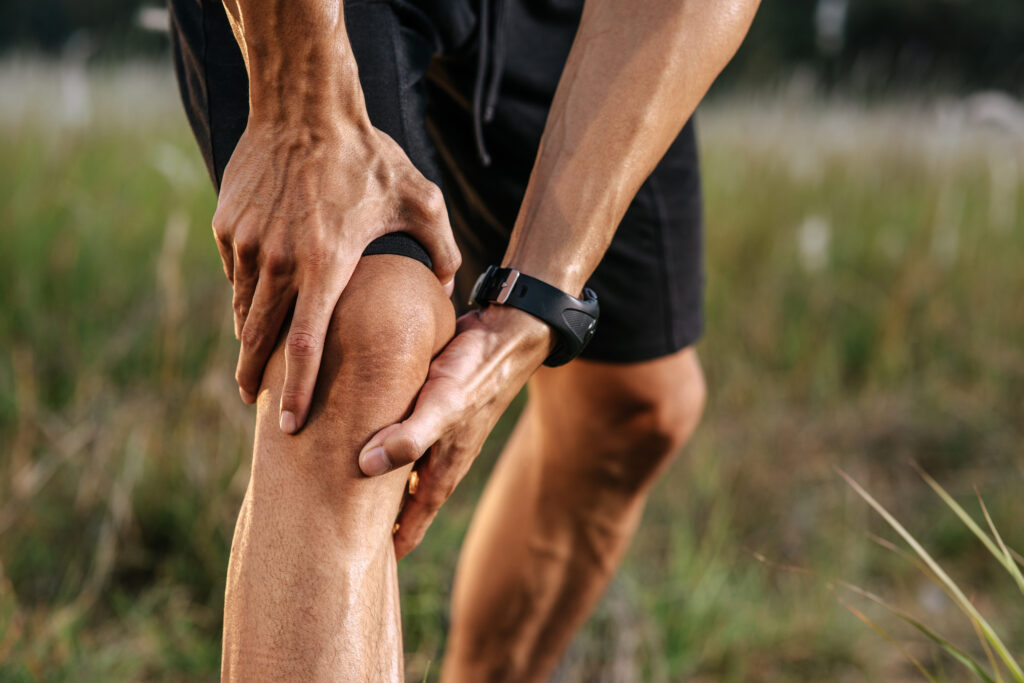If you're struggling with lower back pain in San Antonio, you're not alone, and there are effective solutions at your fingertips. From physical therapy and chiropractic care to lifestyle changes and alternative therapies, local experts have tailored approaches that might suit your needs. You may find that a combination of these treatments can greatly improve your situation. But before you decide on a path forward, it's crucial to understand the various options available and how they work together to promote healing. What if you could pinpoint the most effective strategies for your unique circumstances?
Understanding Lower Back Pain
Lower back pain is a common issue that affects nearly everyone at some point in their lives. You might experience it due to various reasons, including poor posture, muscle strain, or an underlying medical condition. Understanding the causes can help you identify the best approach to manage your pain.
One of the primary culprits of lower back pain is muscle strain. You may have lifted something heavy, twisted awkwardly, or even spent too long sitting in an uncomfortable position. This strain can lead to inflammation and discomfort that can linger if not addressed.
Additionally, certain lifestyle choices, such as a lack of exercise and being overweight, can put extra stress on your lower back.
Another factor could be your daily habits. If you often find yourself slouching while working at a desk or hunching over your phone, you're likely contributing to your back pain. It's vital to maintain good posture and take breaks to stretch and move around throughout the day.
Sometimes, underlying health issues like herniated discs or arthritis can be to blame. If your pain persists or worsens, it's important to consult a healthcare professional for a thorough evaluation and tailored advice.
Ultimately, understanding the root causes of your lower back pain can empower you to take steps towards relief. By recognizing your habits and making adjustments, you can greatly improve your overall well-being and reduce discomfort.
Physical Therapy Options
When dealing with lower back pain, exploring physical therapy options can be a game-changer. Physical therapy offers a structured approach to managing your pain and improving your mobility. A licensed physical therapist will assess your condition and design a personalized treatment plan tailored to your specific needs.
One common technique you might encounter is therapeutic exercise. These exercises focus on strengthening your core, improving flexibility, and enhancing your overall posture. By committing to a regular exercise routine, you can build the muscles that support your spine, which may alleviate pain over time.
Another effective option is manual therapy, where your therapist uses hands-on techniques to manipulate your back and surrounding tissues. This often helps reduce pain and improves mobility.
You may also benefit from modalities like heat, cold, ultrasound, or electrical stimulation. These can help manage inflammation and promote healing.
Education is a vital aspect of physical therapy. Your therapist can teach you about body mechanics and ergonomics, helping you make modifications in your daily activities that reduce strain on your back. This knowledge empowers you to prevent future injuries.
Finally, don't underestimate the importance of consistency. Attending regular sessions and following your therapist's recommendations at home is essential for achieving lasting results.
Chiropractic Care Benefits
Seeking relief from lower back pain? Chiropractic care might be just what you need. This hands-on approach focuses on diagnosing and treating musculoskeletal issues, primarily those related to the spine. By visiting a chiropractor, you can experience significant pain relief and improved mobility.
One of the primary benefits of chiropractic care is its emphasis on spinal adjustments. These adjustments can realign your spine, reduce nerve irritability, and ultimately alleviate pressure on your lower back. Many patients report feeling immediate relief after just one session.
You'll likely notice improved flexibility and reduced discomfort, allowing you to return to your daily activities with greater ease.
Chiropractors also provide personalized treatment plans tailored to your specific needs. They'll take the time to assess your condition and recommend a variety of techniques, ensuring you receive the most effective care possible.
Alongside spinal manipulation, they may incorporate other therapies, such as massage or exercise recommendations, to enhance your healing process.
Another key benefit is the holistic approach chiropractic care offers. Instead of merely masking symptoms with medication, chiropractors focus on treating the root cause of your pain. This can lead to long-term relief and a better understanding of how to maintain your spinal health.
If you're tired of living with lower back pain, consider scheduling a consultation with a chiropractor. You might just discover a pathway to relief you hadn't imagined possible.
Your journey to a pain-free life could start with the right chiropractic care.
Lifestyle Modifications
To manage lower back pain effectively, you need to make some lifestyle modifications.
Creating an ergonomic work environment, staying active, and maintaining a healthy weight can greatly impact your comfort and mobility.
Let's explore how these changes can help you feel better every day.
Ergonomic Work Environment
How can creating an ergonomic work environment help alleviate lower back pain? It's simple: when your workspace is designed to fit your body, you're less likely to strain your muscles or joints.
Start by investing in an adjustable chair that supports your lower back. Confirm your feet are flat on the floor and your knees are at a right angle. This promotes good posture and reduces pressure on your spine.
Next, position your computer monitor at eye level, so you don't have to lean forward or tilt your neck. Your keyboard should be at a height that allows your elbows to remain close to your body and at a 90-degree angle.
Don't forget about your desk – it should provide enough space for your legs to move freely. Additionally, consider using a footrest if your feet don't reach the floor comfortably.
Remember to take breaks and change positions throughout the day. Stretching can help relieve tension that builds up from prolonged sitting.
Regular Physical Activity
Incorporating regular physical activity into your daily routine can greatly reduce lower back pain and improve your overall well-being. Engaging in exercises that strengthen your core, such as planks and bridges, can provide the support your spine needs. Stretching exercises, like hamstring and hip flexor stretches, can enhance flexibility and alleviate tension in your back.
Aim for at least 150 minutes of moderate aerobic activity each week. Activities like walking, swimming, or cycling can increase blood flow to your back muscles, promoting healing and reducing stiffness. If you're new to exercise, start slowly and gradually increase your intensity and duration. Consistency is key, so find activities you enjoy to keep you motivated.
Incorporating short bouts of movement throughout your day can also be beneficial. Try standing or walking during phone calls, or take brief breaks to stretch your back if you sit for long periods.
Healthy Weight Management
Maintaining a healthy weight plays a significant role in managing lower back pain. When you carry extra weight, especially around your midsection, it can put additional strain on your back muscles and spine. This added pressure can lead to discomfort and exacerbate any existing pain. By focusing on weight management, you can reduce this strain and improve your overall spinal health.
To achieve a healthy weight, start by adopting balanced eating habits. Incorporate plenty of fruits, vegetables, whole grains, and lean proteins into your meals. Paying attention to portion sizes can also help you avoid overeating.
Regular physical activity is essential, too; aim for at least 150 minutes of moderate exercise each week. Activities like walking, swimming, or biking can help you burn calories and strengthen your core, providing better support for your back.
Don't forget to stay hydrated; water is vital for maintaining energy levels and aiding digestion.
Alternative Therapies
For many people dealing with lower back pain, exploring alternative therapies can offer a rejuvenating approach to relief. These therapies often focus on holistic healing, targeting not just the pain but also the underlying causes.
One popular option is chiropractic care, where adjustments help realign the spine and improve mobility. You'll likely find that regular visits can lead to lasting benefits.
Acupuncture is another effective alternative therapy. By inserting thin needles at specific points, practitioners aim to balance your body's energy and reduce pain. Many individuals report a noticeable decrease in discomfort after just a few sessions.
Massage therapy also plays a noteworthy role in easing lower back tension. Whether it's deep tissue, Swedish, or trigger point therapy, a skilled massage therapist can help alleviate muscle tightness and enhance circulation, promoting quicker recovery.
Yoga and Pilates can also be powerful tools in your journey toward relief. These practices focus on core strength, flexibility, and proper posture, which are essential in preventing future pain episodes. Incorporating these exercises into your routine can greatly improve your overall well-being.
Lastly, consider herbal remedies and supplements. Some people find relief using natural anti-inflammatories like turmeric or ginger, while others benefit from magnesium for muscle relaxation.
Always consult with a healthcare provider before starting new supplements.
Incorporating these alternative therapies into your treatment plan can pave the way for a more balanced and pain-free life.
Medication and Pain Management
While alternative therapies can provide significant relief, medication and pain management play an important role for many individuals coping with lower back pain. When you're struggling with discomfort, over-the-counter pain relievers like ibuprofen or acetaminophen can be your first line of defense. These medications help reduce inflammation and alleviate pain, allowing you to carry on with daily activities.
If you find that over-the-counter options aren't effective enough, your doctor might prescribe stronger medications. Muscle relaxants can help if you're dealing with muscle spasms, while prescription painkillers may be necessary for severe pain. However, it's vital to use these medications judiciously, as they can come with side effects and risks of dependency.
In addition to traditional pain relievers, topical treatments like creams or patches can offer localized relief. These products often contain ingredients that penetrate the skin to reduce pain in specific areas, making them a good option for targeted treatment.
Another important aspect of pain management is understanding your body and the triggers that exacerbate your pain. Keeping a pain diary can help you identify patterns and discuss them with your healthcare provider. They can tailor your medication plan based on your specific needs, ensuring you get the most effective treatment.
When to Seek Professional Help
If your lower back pain persists for more than a few days, it's time to contemplate professional help.
When the pain starts affecting your daily activities or you notice symptoms that could indicate a serious condition, don't hesitate to reach out to a healthcare provider.
Taking action early can prevent further complications and help you get back on track.
Persistent Pain Duration
Knowing when to seek professional help for persistent lower back pain can be challenging. If your pain lasts longer than a few weeks or worsens over time, it's a sign that you shouldn't ignore your symptoms. You might think it'll go away on its own, but delaying treatment can lead to more serious issues.
Pay attention to any accompanying symptoms. If you experience numbness, tingling, or weakness in your legs, these could indicate nerve involvement. Additionally, if you notice changes in bowel or bladder control, you need to seek immediate medical attention.
Consider your pain's impact on your daily life. If it's affecting your work, sleep, or ability to perform simple tasks, it's time to consult a healthcare professional. Early intervention is essential in preventing further complications and restoring your quality of life.
Lastly, don't hesitate to reach out if your pain is accompanied by unexplained weight loss, fever, or swelling. These symptoms could indicate underlying conditions that require prompt evaluation.
Trust your instincts and prioritize your health—getting the right care early can make all the difference in your recovery journey.
Impact on Daily Activities
Lower back pain can considerably disrupt your daily activities, making even the simplest tasks feel intimidating.
It's vital to recognize when this discomfort begins to impact your quality of life. If you find yourself struggling with everyday chores or hobbies, it may be time to seek professional help.
Here are three signs that it's important to consult with a healthcare provider:
- Difficulty with Daily Tasks: If you're unable to lift groceries, bend down to tie your shoes, or stand up from a sitting position without pain, it's a red flag.
- Interference with Sleep: When back pain keeps you tossing and turning at night, it can lead to fatigue and affect your overall well-being.
- Persistent Pain: If your pain persists for more than a few days or intensifies, don't wait for it to resolve on its own.
Taking action at the right time can prevent further complications and help you regain control over your daily life.
Don't hesitate to reach out for the support you need to manage your lower back pain effectively.
Symptoms of Serious Conditions
Recognizing the signs of serious conditions related to lower back pain is essential for your health. If you experience sudden, severe pain that doesn't improve with rest or over-the-counter medication, it's vital to seek professional help.
Additionally, if your pain radiates down your leg, especially if you feel weakness or numbness, don't ignore these symptoms. This could indicate nerve compression, which may require immediate attention.
Fever, unexplained weight loss, or significant changes in bowel or bladder function alongside lower back pain are also warning signs. These symptoms might suggest infections or other serious conditions, such as tumors.
If you've recently had an injury, and the pain worsens or is accompanied by swelling or bruising, it's time to consult a healthcare provider.
Finally, if your lower back pain persists for more than a few weeks, or if you find it increasingly difficult to perform daily activities, don't hesitate to reach out for help.
Early intervention can make a significant difference in your recovery and overall well-being, so trust your instincts and prioritize your health.
Conclusion
In San Antonio, finding effective solutions for lower back pain is all about taking a proactive approach. By combining physical therapy, chiropractic care, and lifestyle changes, you can greatly improve your back health. Don't forget to explore alternative therapies and consider medication if needed. Remember, if your pain persists or worsens, it's essential to seek professional help. With the right support and strategies, you can enjoy a more active, pain-free life.



